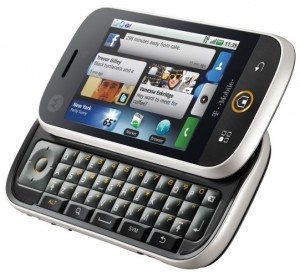 Since the launch of the MotoCliq yesterday, my Facebook and Twitter have been flooded with hurrahs and comments about this cool new device. Seven years in Motorola gave me enough friends there and some of them were heavily involved in making this Motorola dream a reality. Great work guys!
Since the launch of the MotoCliq yesterday, my Facebook and Twitter have been flooded with hurrahs and comments about this cool new device. Seven years in Motorola gave me enough friends there and some of them were heavily involved in making this Motorola dream a reality. Great work guys!
The iPhone kick-started it all and now Motorola has joined the social networking bandwagon (many others have but very few deliver the experience worth mentioning) with it’s first Android phone. They have gone a step ahead (as should be expected) and created a great experience around integration of the various social networking sites in a very cool looking ‘Homepage Dashboard’. Sanjay Jha in his talk at Mobilize 09 said that ‘one-to-one’ communication is a thing of the past. Now, it’s all about ‘one-to-many’ and the MotoCliq is true to this tenet.
This is all good but what happens if ‘Facebook’ or ‘Twitter’ are not ‘THE’ social networking sites anymore. The probability of that happening is low at least till the launch of Motocliq but same time next year and the story might be very different.
If changes in the human behavior at the high tier segment has forced companies to respond with the now social networking solutions, can they not extrapolate this behavior to the many many more low/mid tier user groups, provide customized social networking solutions, encourage this networking behavior and drive ARPU.
How do mobile phone companies respond to 2 basic questions?
- How do we keep pace with the ever-changing landscape of social networking sites
- How do we scale it so that such services are made available to the rest of the 80-90% low to mid tier cell phone users worldwide
Living in India the second question intrigues me more. For sometime now I have been thinking about a flexible mobile social networking platform that can be customized for different and specific user groups at the low and mid tier user categories.
Consider these user groups:
- Auto rickshaw/Taxi drivers across a city like Mumbai
- Truck drivers across India
- The millions of maids employed in every middle-class family of India
- The millions of farmers across various states in India
Now a few facts about the above user groups:
- They all have cell phones
- They do not possess an internet connection
- The cell phone is their main channel of communication and entertainment
- Their awareness levels of things around is very minimal and hence are an exploited lot
- They come from very specific user groups and normally communicate within their own group/community
With the above facts, a dashboard like networking application can improve the quality and extent of communication and also make them more aware, entertained and connected. It could eventually provide them with a better life.
I hope the mobile industry is already working on such solutions but I suspect the focus is very heavily bent on making the iPhone competitor. There is an opportunity waiting to be tapped. Any takers!